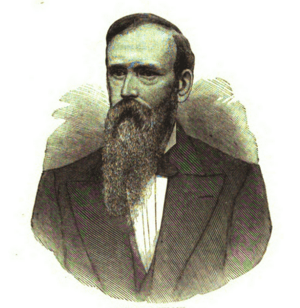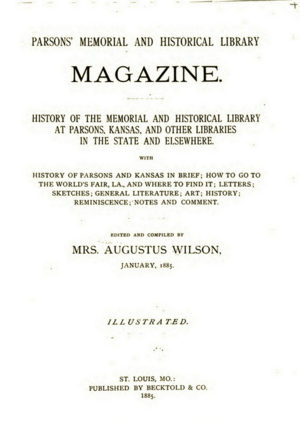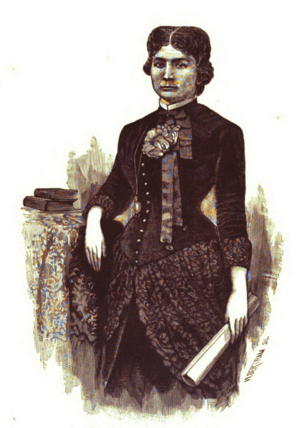Ella B. Ensor Wilson facts for kids
Quick facts for kids
Ella B. Ensor Wilson
|
|
|---|---|
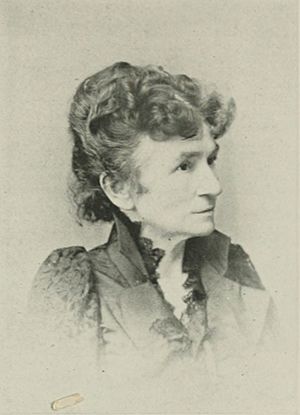 |
|
| Born | Eleanor Benson Ensor 1838 Ensor Manor, Baltimore County, Maryland, U.S. |
| Died | September 11, 1913 |
| Nickname | Ella |
| Occupation |
|
| Spouse |
Augustus Wilson
(m. 1863; died 1885) |
| Signature | |
Ella B. Ensor Wilson (born Eleanor Benson Ensor; 1838 – September 11, 1913) was an American social reformer and writer. She worked to help people and improve society. Ella was involved in the women's suffrage movement, which fought for women's right to vote. She also supported the temperance movement, which aimed to reduce alcohol use.
Ella strongly believed in "equal rights" for everyone. Even though she grew up in Maryland, a state where slavery was allowed, she was always against it. She used her influence and money to support causes that helped women.
Early Life and Family
Eleanor Benson Ensor, known as "Ella," was born in 1838 at Ensor Manor in Baltimore County, Maryland. Her parents were General John S. Ensor and Elizabeth B. Ensor. Her family came from England and had a long history. Her ancestors were soldiers and leaders.
Ella's mother's family, the Scotts, came from Scotland. They were known for their financial skills and strong belief in the Quaker religion. Ella's father was involved in farming, law, and education before he retired.
Ella was the fourth of eight children. She had five brothers and two sisters.
Her Work and Contributions
Starting Her Career
After finishing her education, Ella wrote a book about trees, plants, and flowers. It included poems about their meaning and beauty. During the Civil War, she worked as her father's private secretary.
Moving to Ohio
On December 1, 1863, Ella married Augustus Wilson. He was from Ohio. After traveling around the U.S. and Canada, they settled in Ohio.
Ella became very involved in the women's suffrage movement. In 1870, she was chosen as president of a women's suffrage group. She went to many meetings and conventions for women's voting rights.
In Ohio, she also worked hard for the temperance movement. She was a member of the Good Templars, a temperance group, and her efforts were recognized.
Life in Kansas
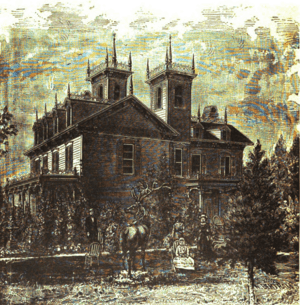
In 1874, the Wilsons moved to Parsons, Kansas. There, her husband started a business. Ella continued her social work. She was a key helper in the "Murphy movement," which promoted temperance. She was the secretary of the Murphy organization in Parsons. She also wrote for a temperance newspaper.
In 1879, she became a lifetime member of the Kansas temperance union. In 1880, she was elected president of the Woman's Christian Temperance Union in Kansas for her area. In July 1881, she was a delegate to a national meeting about prohibition in Chicago.
When she was 15, Ella became a lifetime member of the American Missionary Society. She helped with both local and international projects. She gave a lot of money to the Woman's Board of Foreign Missions. In 1875, she helped raise money to start a mission home in Constantinople, Turkey.
In 1881, she asked the U.S. Congress to help the Exodusters, a group of African Americans who moved to Oklahoma. She wanted them to get homes there. Ella also supported many other public projects. These included a fund for the Bartholdi monument (the Statue of Liberty), help for farmers affected by drought in Kansas, and exhibitions in New Orleans. She was a trustee of the State Art Association of Kansas and a member of the Kansas Historical Society. She belonged to many other important groups too.
President Chester A. Arthur asked the Governor of Kansas, George Washington Glick, to appoint Ella as Lady Commissioner. This was for the Industrial Cotton Centennial Exposition in New Orleans in 1883. At this event, she brought great honor to her state and herself.
Ella helped create the Parsons Memorial and Historical Library. She was the main leader in starting this library. She personally asked companies, groups, and businesses in the Eastern U.S. for money, books, and supplies. She also asked people in Kansas for help. She gave a lot of her own time to the project.
To celebrate the library's opening, Ella edited a 400-page book called Parsons Memorial and Historical Library Magazine. It told the story of the library and the people who helped build it. The book was published in January 1885.
After her husband died in Parsons in 1885, Ella moved to her farm in Wilsonton, Kansas. She built a large house there, visible from the trains passing on the Katy railway. Her beautiful home had one of the best private libraries in the state. Her walls were covered with wonderful paintings and art.
In 1888, she started the Wilsonton Journal newspaper. She was its editor and owner. She had one of the best newspaper buildings in the state, which she also built. For many years, she published the Wilsonton Journal off and on. It was thought she printed it to get free train rides, as trains were a favorite hobby for her. She even convinced the Katy railway to make Wilsonton a stop where trains would whistle. When a law against free passes for newspapers came out, she stopped printing her paper.
Ella was part of the press committee and the Kansas representative for the World's Columbian Exposition in 1893. She wrote poems and stories for different magazines in the U.S.
On December 1, 1898, Ella organized a meeting at her home in Wilsonton. She started a local group of the Universal Peace Union (UPU). This was at the request of the UPU's president, Alfred H. Love. Ella was chosen as the president of the Wilsonton UPU.
Personal Life
Ella and Augustus Wilson had one child, John Emory, who died as a baby in 1869. They also adopted a daughter named Ella Wilson Baker. She was the youngest child of Ella's youngest sister, Laura Ensor Baker.
Ella was a trustee of the State Art association of Kansas. She was also an honorary member of the State Historical society. She belonged to the Social Science club of Kansas and Missouri, and the Kansas Woman's Press association. She led the Spanish Study club in Wilsonton and the Woman's Mutual Improvement association. She was also a member and director of the National Art Association.
Ella was a member of the Congregational Church. Later in life, she became a Spiritualist. She even had a small chapel on her Wilsonton farm where she sometimes held services.
In her later years, Ella faced some health challenges. In March 1912, a judge and doctors visited her at Wilsonton. They decided she needed care. She was first taken to a state hospital, but they couldn't admit her because of her age. She then went to Bartlesville, Oklahoma, to live with family members who could care for her. Her guardian, Samuel Carson, was given permission to sell some of her property to pay for her care.
While living with relatives in Bartlesville, Ella wandered away. Her family could no longer care for her. On May 26, 1913, she was taken to the state hospital in Osawatomie, Kansas. Ella B. Ensor Wilson died on September 11, 1913. Her guardian said that all of her money was used to pay for her care before she passed away.
Selected Works
- History of the Cattle Trade of the United States
- History of National Cattle Conventions
- Parsons Memorial and Historical Library Magazine, 1885


